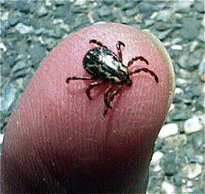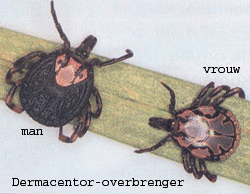Signs, Diagnosis and Treatment of Babesiosis in Dogs
Babesia infections occur in dogs and other species, and are transmitted mainly by ticks. Babesia are protozoal parasites that attack blood cells, though the severity of illness varies considerably depending on the species of Babesia involved, as well as the immune response of the infected dog.
The primary result of a Babesia infection is anemia as the immune system destroys infected red blood cells, but Babesia can have other effects throughout the body as well.
Cause
Babesia are a type of microscopic parasites that infect red blood cells, causing a disease called babesiosis. There are many species of Babesia, which infect a wide variety of animals, but there are only a few species that affect dogs. While our understanding of Babesia is improving, diagnosis and treatment of Babesia infections remains challenging.
Most Babesia infections are acquired through ticks. Because it is spread by ticks, Babesia is most common in warmer weather when ticks are most numerous. Infections are also possible through blood transfusions, and in the case of one Babesia species (Babesia gibsoni), dog-to-dog transmission via bite wounds is thought to be a mode of transmission. Mothers can also pass Babesia to their pups before birth.
Risk Factors
Babesia infections occur worldwide in areas where the ticks that carry the disease are common. While any dog can be infected, young dogs tend to suffer more serious illness. Greyhounds, pit bull terriers, and American Staffordshire terriers seem to be most susceptible to infection (Greyhounds with a strain of Babesia canis, and terriers with Babesia gibsoni).
Signs and Symptoms of Babesia
Babesia infections have a wide range of severity: they can be very mild (dogs may not even show symptoms) or very severe (sometimes fatal). The severity depends mainly on the species of Babesia involved but also on the immune system of the dog. Babesia species in the US generally produce milder disease compared to some of the species found elsewhere. The course of the disease may be cyclical, with periods of symptoms punctuated by times where symptoms are absent. Signs and symptoms may include:
• fever
• weakness
• lethargy
• pale gums and tongue
• red or orange urine
• jaundice (yellow tinge to skin, gums, whites of eyes, etc)
• enlarged lymph nodes
• enlarged spleen
In severe cases, multiple organ systems may also be affected such as the lungs, gastrointestinal tract, kidneys, and the nervous system. Sometimes dogs suffer a very acute form of Babesiosis and suddenly go into shock and collapse.
Diagnosis of Babesia
It can be difficult to confirm a diagnosis of Babesiosis. Blood tests may show a decrease in the number of red blood cells and platelets (thrombocytopenia), but this is not specific to Babesia. Blood smears can be examined for the presence of the Babesia organisms. If they are present, the diagnosis can be confirmed, but they may not always show up on a smear (taking blood from a cut on the ear tip or from a toenail can improve the odds of finding the parasites).
Blood can also be tested for antibodies to Babesia, though this can sometimes produce misleading results. Specialized testing can check for genetic material from Babesia, and while this is the most sensitive test, it is not widely available and has some limitations as well. Generally, a combination of lab tests along with clinical signs and history are used to make a diagnosis.
The diagnosis is further complicated by the fact that dogs infected with Babesia may also be infected with other diseases carried by ticks, such as Erlichia, Lyme disease, or Rocky Mountain Spotted Fever.
Treatment of Babesia
A variety of drugs have been used to treat Babesia, with variable success. Imidocarb dipropionate is used most commonly in the US; diminazine aceturate is not available in the US but is used elsewhere. Both have a range of side effects which can be quite severe. A newer combination of drugs, azithromycin and atovaquone, is promising, though expensive. In severe cases, blood transfusions may be necessary.
Treatment relieves the symptoms of babesiosis, but it seems that in many cases, it does not fully clear the parasite from the body. Dogs may remain infected at a low level, and Babesia can flare up again in times of stress or reduced immune function. Dogs that have been diagnosed with Babesia should not be bred or used as blood donors (to prevent spreading disease).
Prevention of Babesia
Preventing exposure to the ticks that carry Babesia is the best means of preventing babesiosis. Check your dog daily for ticks and remove them as soon as possible (ticks must feed for at least 24-48 hours to spread Babesia). This is especially important in peak tick season or if your dog spends time in the woods or tall grass (consider avoiding these areas in tick season).
Products that prevent ticks such as monthly parasite preventatives (e.g., Frontline®, Revolution®) or tick collars (e.g., Preventic®) can be used; be sure to follow your veterinarian’s advice when using these products. Keep grass and brush trimmed in your yard, and in areas where ticks are a serious problem, you can also consider treating the yard and kennel area for ticks. A vaccine is available in Europe, but is only effective against particular strains of Babesia and is not 100 percent effective. Please note: this article has been provided for informational purposes only. If your pet is showing any signs of illness, please consult a veterinarian as quickly as possible.



